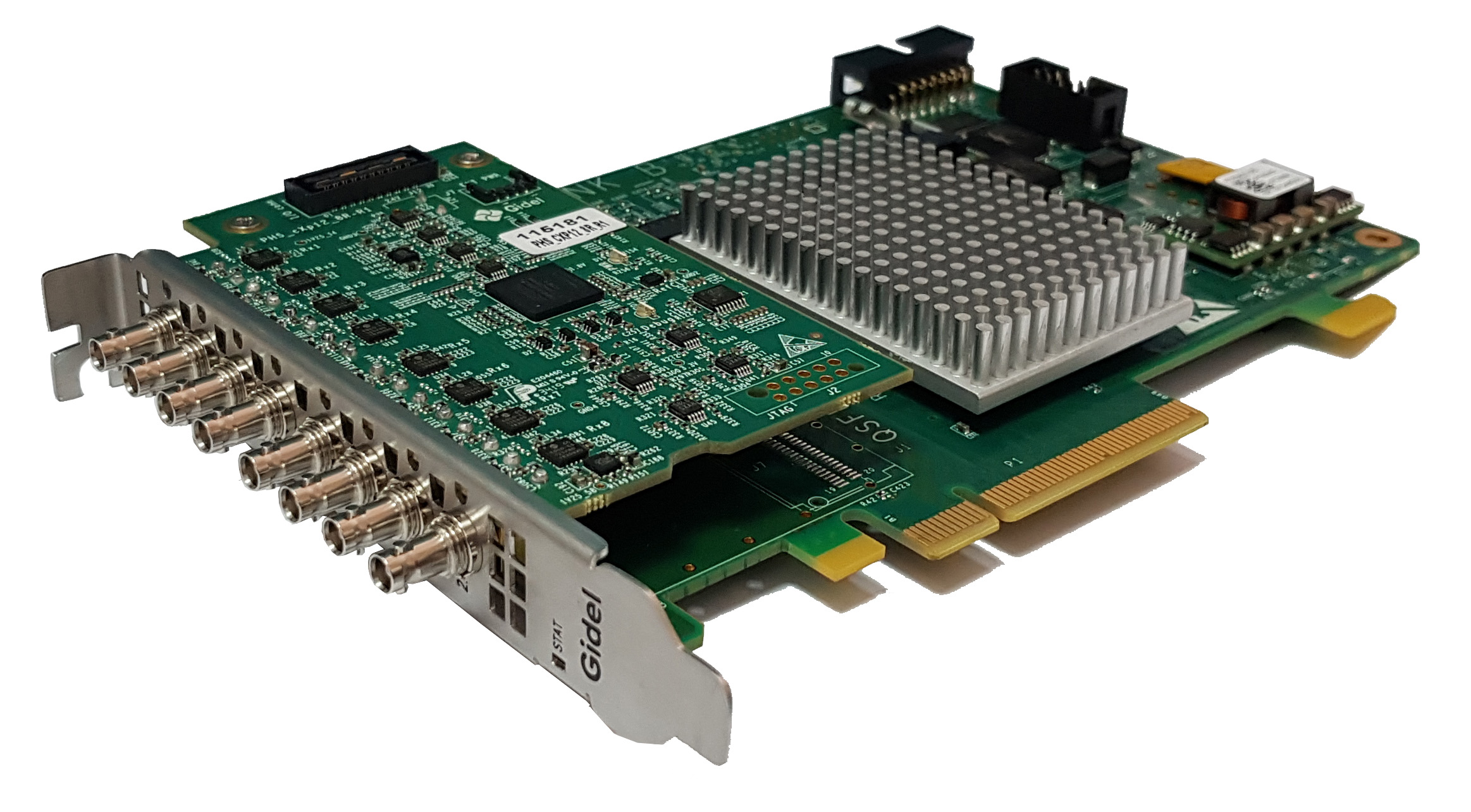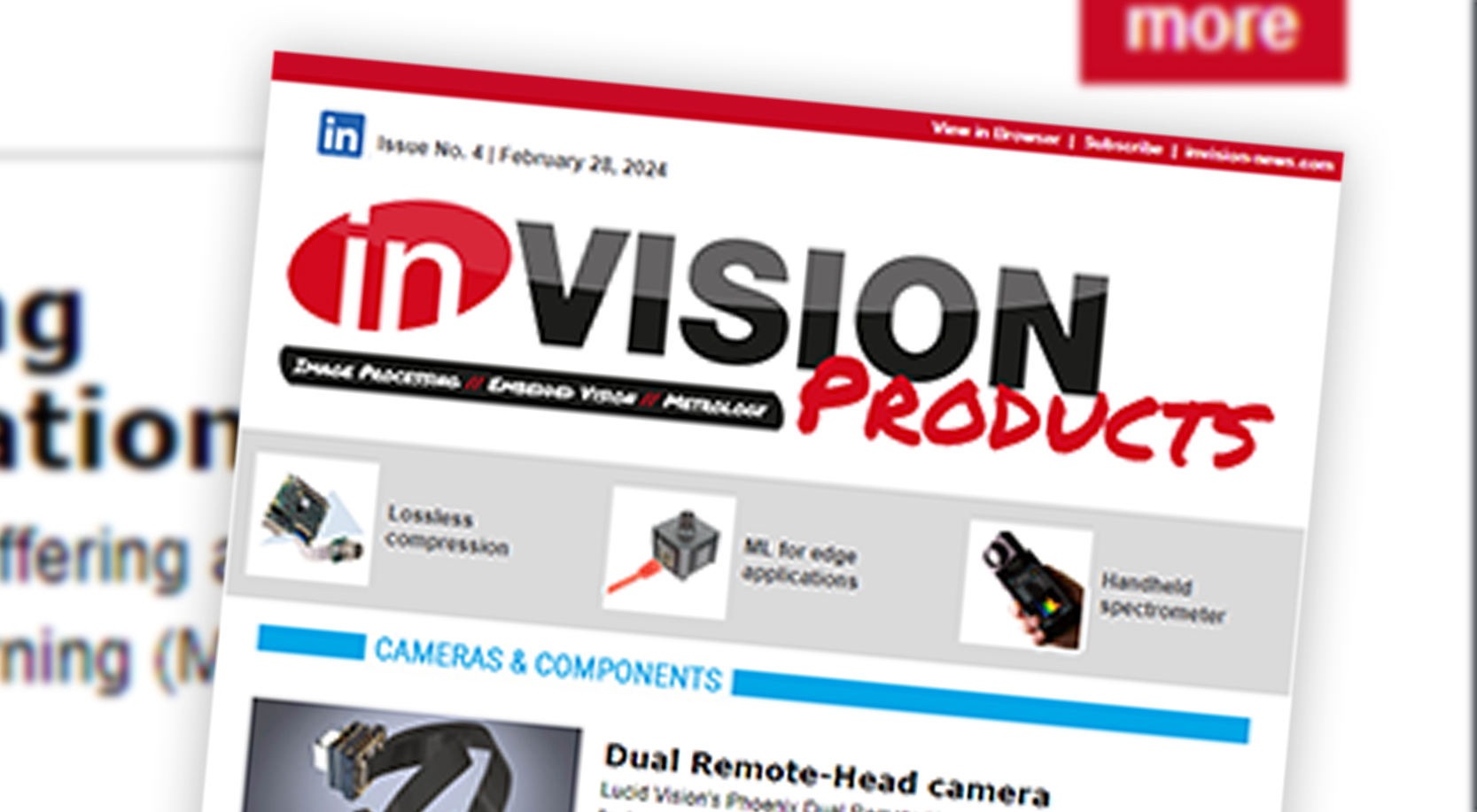Higher End
100Gb/s CXP12 Frame Grabber with Eight 500+MPixels/s Lossless
A new line of frame grabbers doubles the bandwidth of any other grabber on the market. The Proc10A CXP12 and HawkEye CXP12 are based on Arria 10 FPGAs and deliver real-time processing capacity and memory resources, supporting up to eight PoCXP12 links to provide up to 100Gb/s throughput (10,000Mb/s).

The Proc10A CXP12 enables the use of eight 500+MPixels/s lossless and JPEG encoders, doubling the pixel frequency of each encoder over that of similar products. (Bild: Gidel Ltd.)
The Proc10A CXP12 enables the use of eight 500+MPixels/s lossless and JPEG encoders, doubling the pixel frequency of each encoder over that of similar products. The higher-end grabber can process at least as fast as 2GPixels/s per camera. Both grabbers fully support Line Scan and Area Scan cameras, as well as GenICam. They utilize Power-Over CoaXPress (PoCXP) and offers on-board memory of up to 34GB. The grabbers‘ compact compression encoders, in combination with Gidel’s InfiniVision, deliver an effective recording system, capable of synchronizing more than 100 cameras/sensors. The CoaXPress 12 grabbers‘ APIs allow them to handle separate programs/processes in online machine vision processing and recording systems in parallel, with compression for the recording system handled right on the grabber, making the products suited for applications with the need to keep original data. „Gidel’s ability to deliver eight CXP12 links, process data right on the grabber, and compress data on the fly reduces the number of grabbers and computers needed per task, as well as the camera system’s overall power consumption,“ says Ofer Pravda, VP Marketing & Sales at Gidel. The new grabbers and their image processing capabilities can be fully customized to create unique Vision flows. Users are able to (a) tailor protocols to proprietary cameras, including the ability to change the frame size and format for every frame, (b) accelerate Image Signal Processing (ISP) via the grabber’s FPGA by using their own IPs in combination with desired Gidel IPs and templates, including optional lossless and other compression so that data can be processed offline and (c) customize their cost/performance outcomes with a range of grabbers, from low cost options to higher-end grabbers that offer 1.15 million Logic Elements (LEs) for ISP. As Gidel provides much of the core infrastructure required for vision applications, users can quickly get started with building their own FPGA vision flows. The frame grabbers are supported by the ProcVision Kit, which allows users to tailor their vision flows in a simple manner by customizing both the software and the FPGA design code for different frame grabbing flavors. The developer’s kit enables automatic generation of Application Support Packages (ASPs), and includes CamSim (camera simulator) as well as tools for debugging and verifying FPGA image processing IPs.












